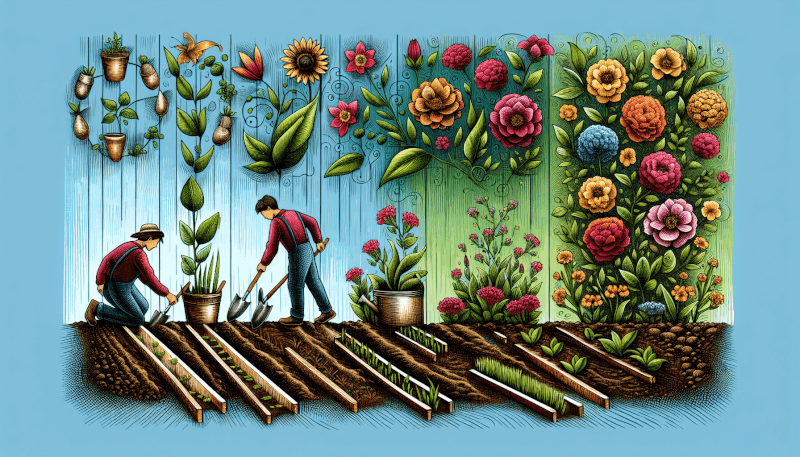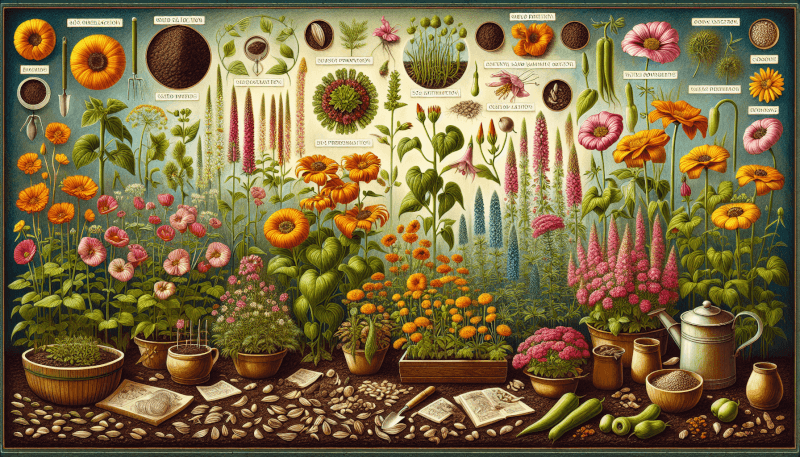If you’ve ever dreamt of having a flourishing garden full of vibrant, freshly bloomed flowers, then you’re in luck. In this beginner’s guide, you’ll discover everything you need to know about growing your own DIY garden flowers. From selecting the right seeds to nurturing your plants with care, this article will provide you with all the essential tips and tricks to kickstart your gardening journey. With a little bit of patience and a whole lot of love for nature, you’ll soon be enjoying the beauty and fragrance of your very own homegrown floral oasis. So grab your gardening gloves and get ready to embark on a rewarding and colorful adventure!
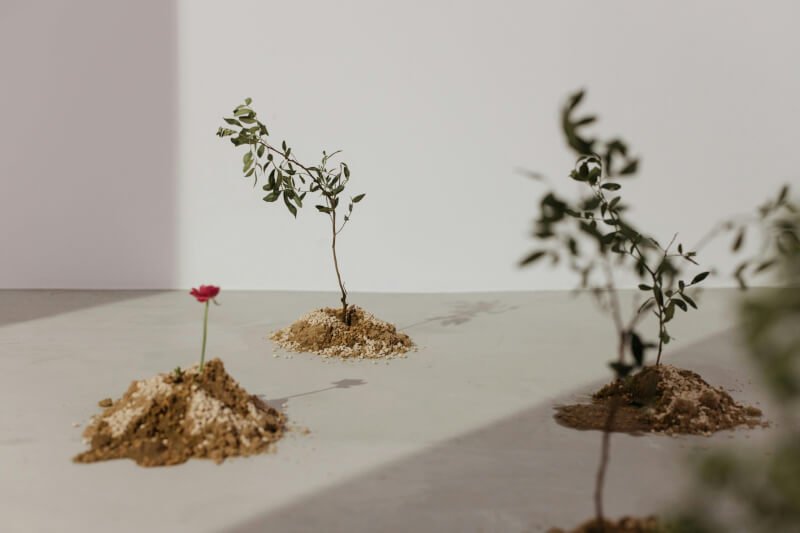
Choosing the Right Flowers
When it comes to choosing the right flowers for your garden, there are a few important factors to consider. First and foremost, you need to think about the climate in which you live. Some flowers thrive in cool and moderate climates, while others prefer the heat. Make sure to choose flowers that are well-suited for your specific climate to ensure their success.
Another consideration is the size of your garden. If you have a small garden, you’ll want to choose flowers that won’t overpower the space and can be easily managed. On the other hand, if you have a large garden, you have more freedom to plant a variety of flowers and create a stunning floral display.
Lastly, you’ll need to decide whether you want to plant annuals or perennials. Annual flowers have a shorter lifespan and need to be replanted each year, but they often provide a burst of color and can be easily changed up from season to season. Perennials, on the other hand, come back year after year, providing a more consistent and long-lasting display. Consider your preferences and gardening goals when making this decision.
Preparing the Soil
Preparing the soil is a crucial step in ensuring the health and success of your garden flowers. One of the first things you should do is test the pH of your soil. Different flowers have different pH preferences, so it’s important to know the acidity or alkalinity of your soil. You can purchase a soil testing kit from a garden center or send a sample to a lab for analysis.
Once you know the pH of your soil, you may need to amend it with organic matter. Adding compost, well-rotted manure, or other organic materials can help improve the soil structure, drainage, and fertility. This will provide a nutrient-rich environment for your flowers to thrive.
Before planting, it’s important to remove any weeds or rocks from the soil. Weeds can compete with your flowers for nutrients and water, so it’s best to remove them before they have a chance to take hold and spread. Rocks can impede root growth and make it difficult for your flowers to establish themselves.
Planning Your Garden Layout
Creating a well-planned garden layout is essential for maximizing the beauty and functionality of your space. One of the first things to consider is the amount of sunlight and shade in different areas of your garden. Some flowers require full sun to thrive, while others prefer partial shade. By understanding the light conditions in your garden, you can choose flowers that will flourish in each area.
In addition to sunlight and shade, it’s important to group flowers with similar water needs together. Some flowers require more water than others, and by grouping them together, you can ensure that they are receiving the appropriate amount of moisture. This will make watering more efficient and prevent water waste.
To create a visually appealing garden, it’s also a good idea to incorporate a focal point. This could be a large tree, a decorative statue, or a unique arrangement of flowers. By creating a focal point, you draw the eye and add interest to your garden.
Starting from Seeds
Growing flowers from seeds is an affordable and rewarding way to fill your garden with blooms. However, it’s important to determine the right time to sow your seeds. Different flowers have different germination and growth requirements, so be sure to consult the seed packet or a gardening guide for specific instructions.
Once you know the appropriate time to sow your seeds, you’ll need to prepare seed trays or pots. These containers should have drainage holes to prevent waterlogged soil. Fill them with a high-quality seed starting mix, which provides the necessary nutrients and drainage for successful seed germination.
When planting seeds, it’s important to do so at the proper depth. This information is usually included on the seed packet. As a general rule of thumb, large seeds should be planted deeper, while smaller seeds can be planted closer to the soil surface. Be sure to water your seeds gently after planting to ensure good moisture contact and encourage germination.
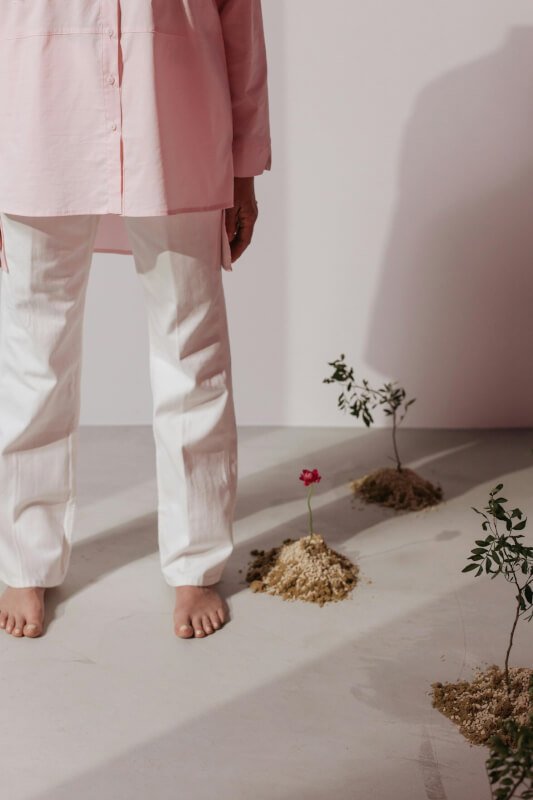
Propagating from Cuttings
Another way to expand your garden is by propagating flowers from cuttings. Not all plants are suitable for propagation through cuttings, so it’s important to do your research and identify which plants can be successfully propagated in this way. Some common examples include roses, lavender, and geraniums.
To take stem cuttings, it’s important to choose the right time. The best time to take cuttings is typically during the spring or early summer when plants are actively growing. Look for healthy, non-flowering stems and use sharp, clean secateurs to make a clean cut just below a leaf node.
Before planting your cuttings, it’s necessary to prepare a suitable rooting environment. This can be achieved by filling pots or trays with a well-draining and sterile rooting medium, such as perlite or vermiculite. Moisten the rooting medium, insert the cuttings, and provide them with a warm and humid environment to promote root development.
Caring for Your Flowers
Proper care is essential for the health and longevity of your garden flowers. One of the most important aspects of care is watering. Some flowers prefer consistently moist soil, while others prefer to dry out slightly between waterings. It’s important to provide the appropriate amount of water for each plant’s individual needs.
In addition to watering, fertilizing is another important aspect of flower care. Fertilizers provide essential nutrients that support healthy growth and vibrant blooms. Choose a balanced fertilizer or one specifically formulated for flowering plants, and follow the instructions for application rates and frequency.
Mulching is another beneficial practice for flower care. Mulch helps to suppress weeds, retain moisture in the soil, and regulate soil temperature. Organic mulches, such as wood chips or straw, are ideal for flower beds as they break down over time and improve soil fertility.
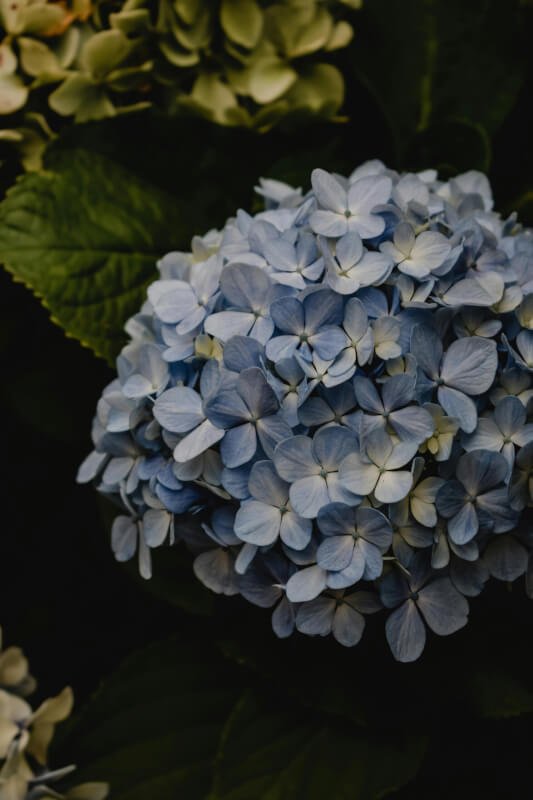
Dealing with Pests and Diseases
Even the most well-maintained gardens can be susceptible to pests and diseases. It’s important to be able to identify common garden pests so that you can take appropriate action. Common pests include aphids, slugs, and snails. There are many organic methods for pest control, such as handpicking, using insecticidal soaps, or attracting beneficial insects to your garden.
Diseases can also impact the health and appearance of your flowers. Common signs of diseases include wilting, discoloration, or spots on leaves. If you notice any signs of disease, it’s important to take action promptly, as some diseases can be highly contagious. Remove infected plants or affected parts, and consider using organic fungicides if necessary.
Pruning and Deadheading
Pruning is an important practice for maintaining the shape, size, and health of your garden flowers. By learning the basics of pruning, you can control the growth and encourage more abundant blooms. Pruning involves selectively removing branches, stems, or leaves to improve the overall structure and appearance of the plant.
Deadheading, or removing wilted flowers, is another important task. Deadheading not only improves the aesthetic appeal of your garden but also encourages the plant to produce more blooms. By removing spent flowers, you redirect the plant’s energy into producing new growth and blossoms.
Pruning and deadheading can also help you control the shape and size of your plants. By selectively removing branches or stems, you can prevent overgrowth and maintain a tidy appearance in your garden.
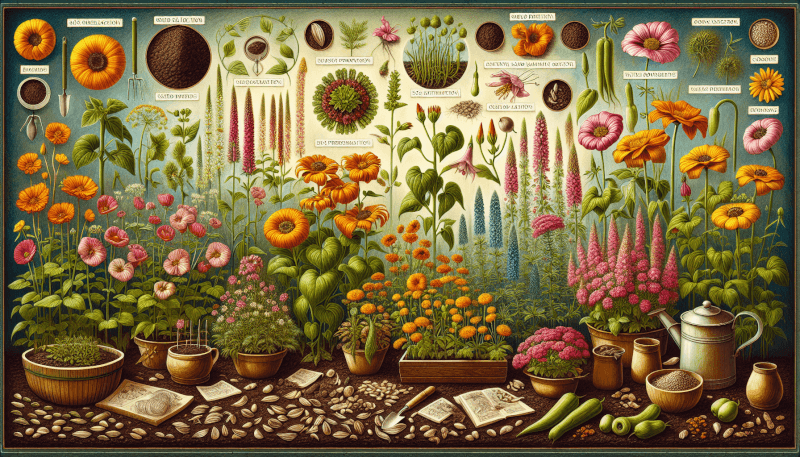
Extending the Flowering Season
If you want to enjoy beautiful blooms for a longer period, it’s important to choose flowers with different blooming times. By selecting a mix of early, mid, and late-blooming flowers, you can ensure that there’s always something in bloom throughout the gardening season. This provides continuous color and interest in your garden.
In addition to careful flower selection, there are techniques you can use to extend the flowering season. Regular deadheading and pinching, as mentioned earlier, can encourage new blooms and prolong the blooming period. Additionally, consider adding late-blooming flowers to your garden to provide color and interest in the later months of the gardening season.
Harvesting and Preserving Flowers
Finally, once your flowers are in full bloom, you may want to harvest and preserve them to enjoy their beauty in other ways. When harvesting flowers, it’s best to do so in the early morning when they are hydrated and at their peak freshness. Use sharp, clean secateurs to make clean cuts just above a leaf node.
To prepare your cut flowers for display, it’s important to use a clean vase and fresh water. Remove any leaves or foliage that will be below the waterline and place the flowers in the vase. Change the water every few days and trim the stems at an angle to promote water uptake.
If you want to preserve your flowers beyond their natural lifespan, consider drying or pressing them. Drying flowers can be done by hanging them upside down in a cool, dry place. Pressing flowers involves placing them between sheets of absorbent paper and applying pressure until they are flat. Both methods can be used to create dried flower arrangements or pressed flower art.
By following these guidelines and investing time and effort into caring for your garden flowers, you can create a beautiful and rewarding outdoor space. Whether you’re a beginner or an experienced gardener, there’s nothing quite like the joy of watching your flowers thrive and bloom. So grab your gardening gloves, get your hands dirty, and start growing your own DIY garden flowers today!
